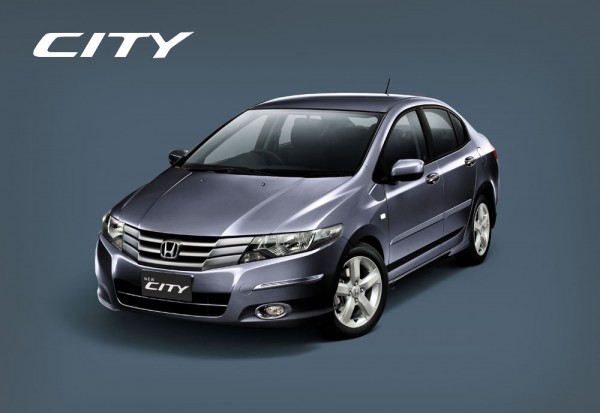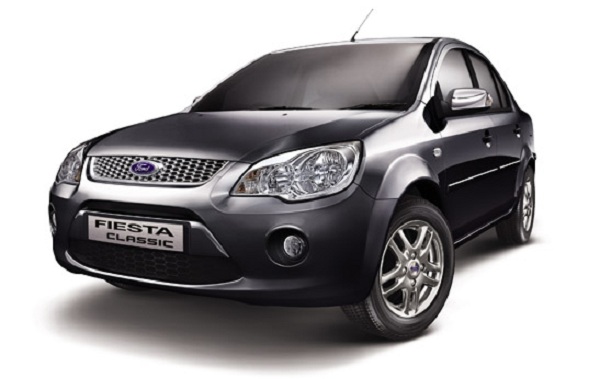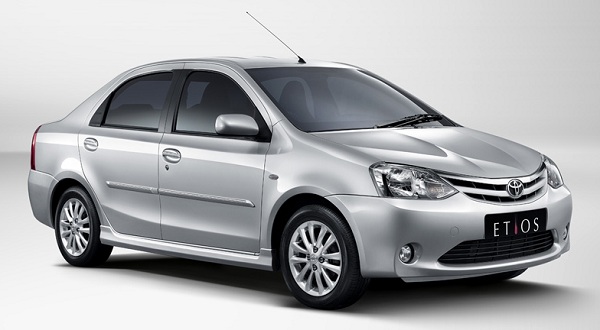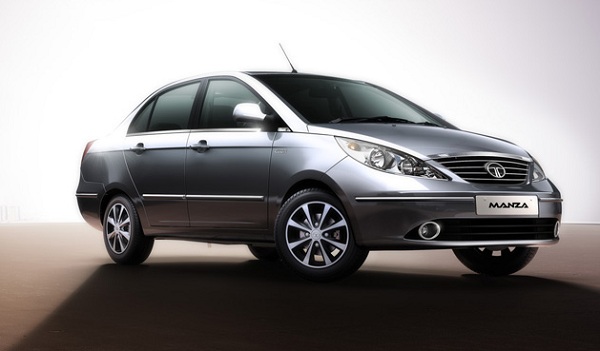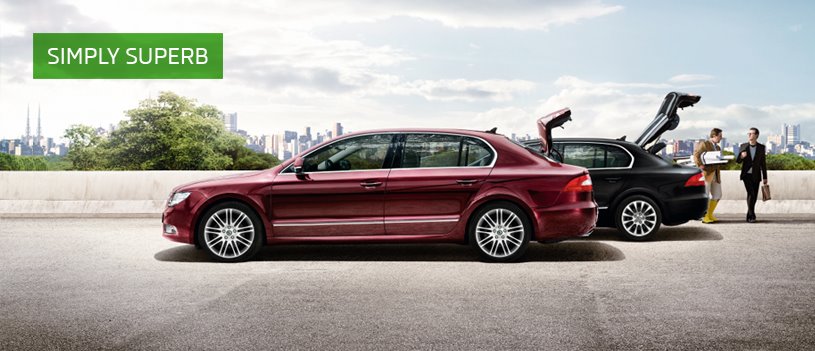 The C-segment gets yet another competitive entry this year. And this time it’s the Czech carmaker, Skoda, with their all new sedan, the Rapid. The Škoda Rapid shares most of the components with the Volkswagen Vento and its sibling, the Fabia. However Skoda has done its best to make a distinction between the two by replacing a few components. The Rapid will be slotted beneath its cousin from the Volkswagen stable and will be giving up on a few features to maintain the gap.
The C-segment gets yet another competitive entry this year. And this time it’s the Czech carmaker, Skoda, with their all new sedan, the Rapid. The Škoda Rapid shares most of the components with the Volkswagen Vento and its sibling, the Fabia. However Skoda has done its best to make a distinction between the two by replacing a few components. The Rapid will be slotted beneath its cousin from the Volkswagen stable and will be giving up on a few features to maintain the gap.
The Rapid is considered to be the replacement for the Octavia sedan, which was discontinued a few months back as the car did not meet the current emission norms. The Rapid covers the space between the Fabia hatch and the Laura.
When Skoda launched the Octavia in India a decade ago, the car was a status symbol and helped Skoda establish the Czech brand very well in India. Now things have changed a lot for Skoda, the brand value has depreciated enormously in the past two-three years. The brand’s image in the country also had to bear the brunt with the entry of its parent company, Volkswagen.
However, a lot has changed from the Octavia’s launch period. Today’s customer expects a lot from car manufacturers. We compare the Rapid with its competition to find out, if Skoda has played its cards right.
1) Honda City –
The Skoda Rapid petrol closely competes with the City, as both offer great value to the buyer. Under the hood, the Honda’s V-TEC is slightly superior to the Rapid’s motor. However, the Rapid follows a great balance between performance and economy.
Feature per Feature, the City takes the lead as the price difference between the two is significant and the Rapid clearly misses out on certain bits, like the steering-mounted controls and a USB enabled audio system. The Rapid does offer a few high-end features likes the rear AC vents, which are missing on most cars in this segment. Overall, I think the Rapid is what you should go for, as it offers a great package despite the significant price difference. The City is also short of a diesel engine, which means if you aren’t looking for a petrol sedan, you cannot have the Honda badge.
2) Maruti Suzuki SX4
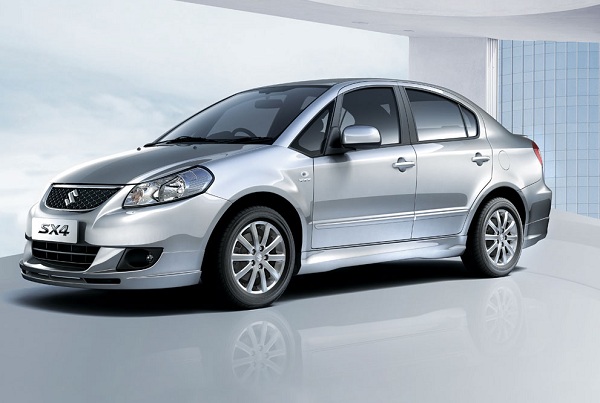 – The SX4 has been around for quite some time now, and feels a bit dated against the competition now.
– The SX4 has been around for quite some time now, and feels a bit dated against the competition now.
The Rapid offers a lot more than the Suzuki, despite of the price gap between the two. Both, the diesel and the petrol motors of the Rapid are a lot more refined and offer a great value.
The SX4 is also available with a CNG option, which means the rising fuel costs won’t bother you much. It also offers a higher ground clearance which allows you to handle the Indian roads very well.
The Rapid is what I would choose, though an SX4 buyer has a clearly different motive. Anyone who buys an SX4 over the competition probably does so because of the Maruti’s reliable image and the dealership network it offers. Skoda in that case is nowhere even close.
3) Ford Fiesta Classic
– The Fiesta may be the oldest on this list, but despite its age its one of the best cars to drive in India. The high pricing of the all new Fiesta has made quite some room for the old one to fight on. The Fiesta Classic offers great value for money, despite being almost half a decade old.
The Rapid is priced above the Classic and also offers more than the Ford. The 1.6 Duratec is a driver’s delight and might lure some buyers, but the ride is no match for Skoda’s. The brand new Rapid clearly wins in this battle here as well. It offers more kit than the Fiesta and drives similarly too, which leaves us with no reason to go for the Classic. The Fiesta still has some life to it and the driving characteristic is what pulls one on the driver’s seat.
4) Nissan Sunny
– Nissan made some clatter with CAAAAAR ads which were not appreciated by many. Engine wise, the Rapid is the clear choice. But if you want to be chauffer driven and the rear seat legroom is what you are looking for, the Nissan Sunny wins hands down.
The Sunny’s pricing is tempting. It offers a long feature list and a great value for money. However, there are some reasons why you would go for the Rapid over the Sunny, and this is where the game changes for the Nissan completely.
The Sunny misses out on a diesel engine (expected to be launched in January 2012), which obviously the Rapid offers. Also, the dealership network of Nissan, when compared to that of the Skoda, is incredibly small. In such a scenario buying a Nissan is not very sensible. The Skoda simply snatches the trophy from the Sunny as it offers, if not similar, but great rear legroom. The Rapid is also available with a decent list of features which makes it a more practical buy.
5) Hyundai Verna
– The current segment leader is going to be the biggest challenge for the Rapid. The Verna’s stunning Fluidic looks, features and various variants are its selling points.
The Rapid has a better automatic transmission (petrol) along with excellent ride and handling. The Verna however, offers a very long variant list, which means ‘there is one, for everyone’. Even the base variant of the Verna is feature packed. The Verna is also available with an Automatic transmission in a diesel variant which the others lack. Both the cars have their own USP’s which means only the sales figures can decide who is a winner. I would personally go for the Rapid just because it drives better and is built better.
6) Toyota Etios
– The Etios is powered by a decently refined Petrol motor, and that’s the only good thing it has. The fit and finish of the Toyota is not upto the mark, which makes it no match for the Rapid.
7) Volkswagen Vento
– The Rapid shouldn’t face any heat from its brother as both of them are positioned differently. However, even if they do affect each other’s sales, the profits will land up in the same bank account.
The Vento now offers a longer list of features thus the price difference is more just. The Rapid on the other hand looks much better and for some reason drives a bit better, even though they share the same engines. Thus choosing between the two of them totally depends on how much you are ready to spend. Personally, Rapid is what I would pick, once again.
8) Tata Indigo Manza
– It offers a huge list of features, the maintenance costs are significantly lower, it has a much bigger dealership network but it still doesn’t seem enough for someone to choose Tata over a Skoda. The refinement levels of a Tata are still not acceptable and the looks can leave a lot to be desired. The Skoda offers a bigger engine with a better build quality and wins this battle hands down.
A Rapid Look:
Engine Specifications: –
* Engine: 1598 cc, MPI 16V DOHC (petrol), 1598 cc, turbocharged, high pressure direct injection system, 16V DOHC (diesel)
* Power: 105 BHP @ 5250 RPM (petrol), 105 BHP @ 4400 RPM (diesel)
* Torque: 153 Nm @ 3800 RPM (petrol), 250 Nm @ 1500 – 2500 RPM (diesel)
* 0 – 100 kmph – 10.7 seconds (petrol), 10.8 seconds (diesel), 12.4 seconds (petrol automatic)
* Top speed – 188 kmph (petrol), 186 kmph (diesel), 183 kmph (petrol automatic)
* Transmission: 5 Speed Manual, 6-Speed Auto (option in petrol Ambition and Elegance)
* Suspension: McPherson suspension with lower triangular links and torsion stabiliser (Front), compound link crank axle (Rear)
* Tires: 185/60/15 Tubeless Radials
* Brakes: Dual rate brake assist, ABS
* Safety: ABS, Dual SRS Airbags, Engine immobilizer
The overall engine performance is similar to that of the Vento, however for some reason the Rapid feels more alive.
– Overall Dimensions
* Overall length x width x height: 4386 mm X 1699 mm X 1466 mm
* Wheelbase: 2552 mm
* Ground Clearance: 168 mm
* Fuel Tank Capacity: 55 liters
* Turning radius – 5.3 meters
* Gross Weight: 1145 kgs (petrol), 1205 (diesel)
– Interiors
*It’s a similar territory in here; all the essentials are carried forward from the Vento. It’s only the instrument cluster and the steering wheel which is different from the VW sibling.
– VERDICT: The Rapid may be a Vento in a different outfit, but Skoda has managed to create a distinction between the two flawlessly. The Czech car maker’s effort to position it beneath the Vento has for some reason made it better than the Vento and that’s enough for a car to be successful.

